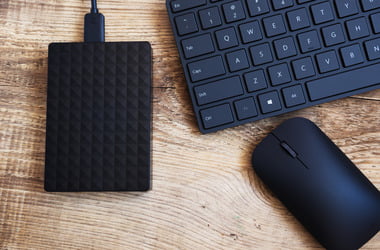When Microsoft released the October 2018 Update, the tech company announced that the Windows 10 operating system will no longer optimize the performance of external storage devices automatically. Instead, it will allow a ‘quick removal’ of the device. You may wonder if the ‘better performance’ option in Windows 10 is still available. In this post, we will explain what quick removal for USB drives means and how you can still enable the ‘better performance’ feature.
Should One Use Better Performance or Quick Removal for USB Drives?
For external storage devices connected via Thunderbolt or USB, you can select among the various policies offered by Windows. It is worth noting that there is a specific policy setting for each individual storage device. Needless to say, you can select a particular policy setting for every device.
However, Windows 10 now features the ‘quick removal’ policy by default, which means that your system writes data to the drive as fast as possible. Theoretically, you will be able to disconnect your USB drive even without using the ‘Safely Remove Hardware’ option. That said, we do not recommend doing this. A program may be running in the background, writing data to the external drive.
On the other hand, quick removal can slow down your apps. For instance, when you try to save a file to your external storage drive, it is possible for a running program to stop. The application will wait for the save process to complete before you can proceed. Now, the ‘better performance’ option can help resolve the slowdown. When this option is activated, your operating system caches the write operations and lets your apps proceed as if they have already written the data. Meanwhile, Windows performs the write operation in the background. Consequently, the applications will perform faster.
You should know that while the ‘better performance’ feature can bring various benefits to your PC, in some cases, it can cause data loss. Users remove their drive believing that their files have been stored properly. However, they discover that the data has not been saved correctly and that their files have been corrupted. This is the reason why you should always take advantage of the ‘Safely Remove Hardware’ option before disconnecting your drive from your PC. Doing so signals your system to write all the cached data to the disk. So, all your files will be safe before you unplug your external drive.
Usually, the improvement in your USB storage drive’s performance depends on various factors, including the following:
- The size of the data you are writing
- Your external storage device’s speed
- An application’s efficiency in writing data
It is undeniable that a lot of users do not bother using the ‘Safely Remove Hardware’ feature before disconnecting their drive. As such, Microsoft used the ‘quick removal’ option as a solution for reducing the risk of data loss.
How to Optimize USB Storages for Better Performance in Windows 10
You can optimize your USB drives and other external storage devices by enabling the ‘better performance’ feature. Keep in mind that you need to do this for every individual device. Moreover, your operating system will remember the setting you chose for each storage device. Basically, whenever you connect the same USB thumb drive, it will be optimized for ‘better performance.’
If you want to enable the ‘better performance’ option for a storage device, follow the instructions below:
- The first thing you need to do is ensure that your external storage device is connected to your computer.
- Now, go to your taskbar, then right-click the Windows icon.
- Select Disk Management from the options.
- Once the Disk Management window is open, look for the name of the disk you want to configure.
- Right-click the disk, then select Properties.
- Go to the Policies tab, then click Better Performance.
- Remember that when you select Better Performance, you need to activate the ‘Enable write caching on the device’ setting under the Write-Caching policy.
- Note: If your external storage device does not have its own power supply, you should not enable the ‘Turn off Windows write-cache buffer flushing on the device’ option. Otherwise, you may lose data in the event of a power failure.
- To save the changes you made, click OK.
- Don’t forget to use the ‘Safely Remove Hardware’ feature before disconnecting your USB flash drive from your PC.
Pro Tip: If you are still experiencing a general slowdown on your PC, we recommend that you use Auslogics BoostSpeed. This tool will run a complete checkup of your entire system and locate junk files and other items that may reduce the speed of your computer. BoostSpeed uses precise techniques to locate issues and safely resolve them without damaging your operating system.
Can you recommend other tips for optimizing the performance of a USB storage device?
Feel free to share them in the comments below!



